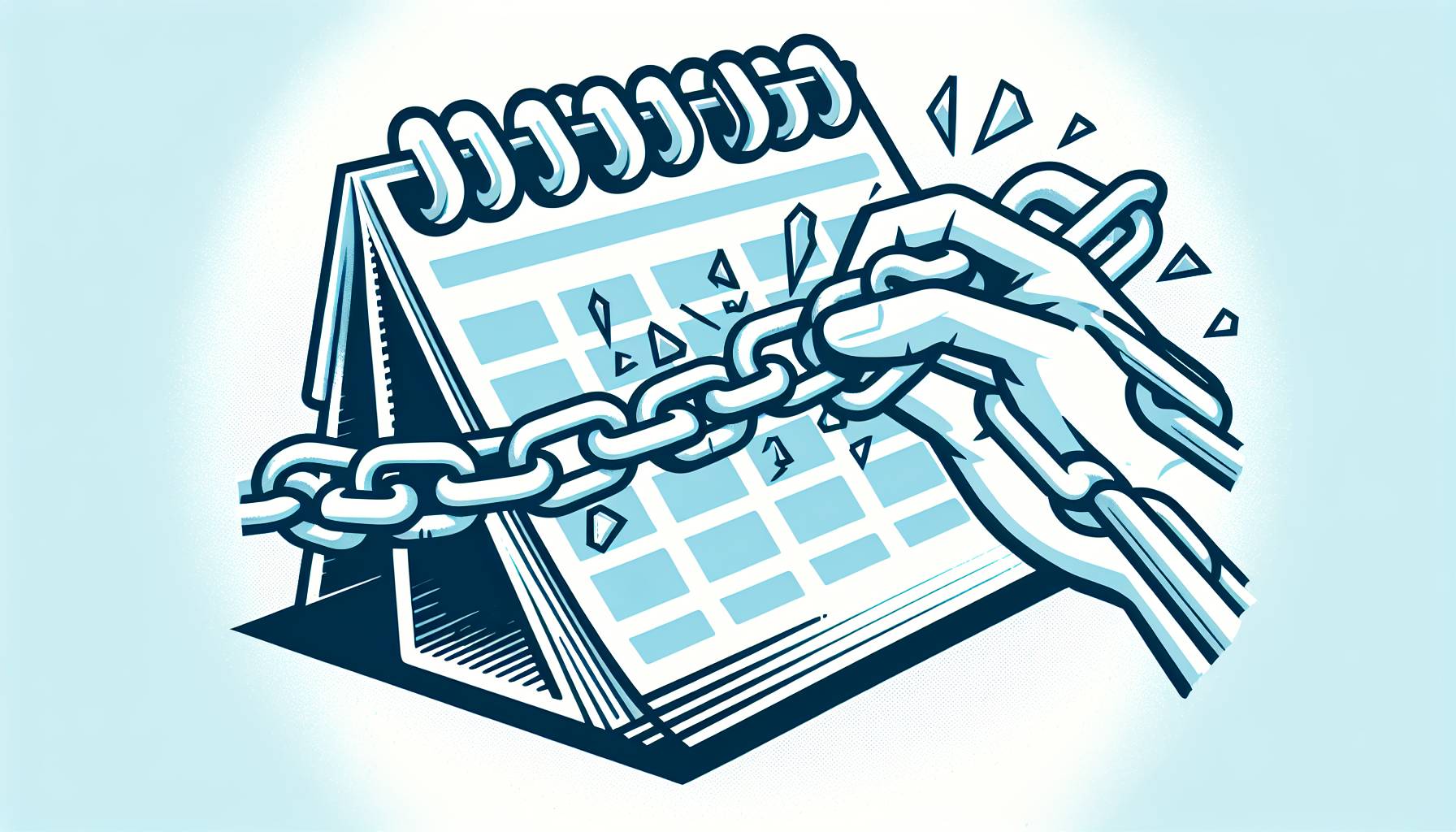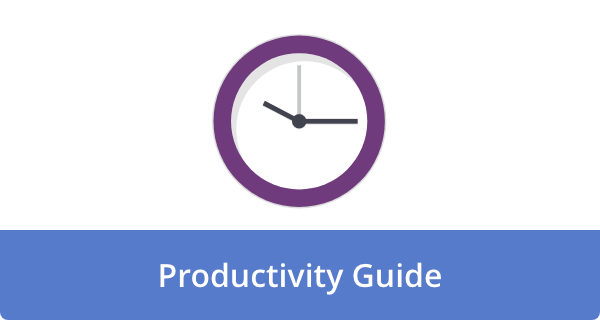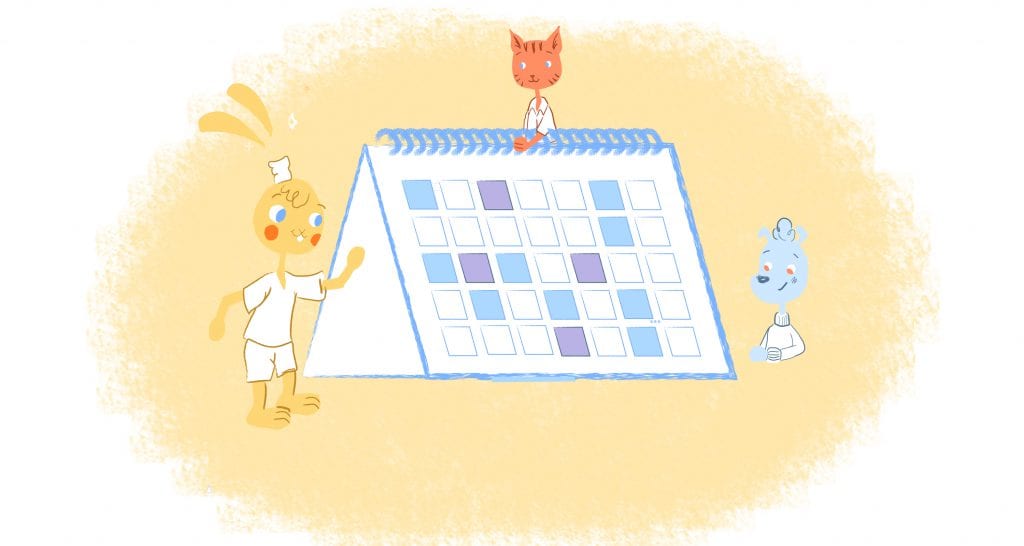

Are you tired of constantly battling the relentless issue of procrastination, only to find yourself drowning in a sea of unaccomplished tasks? You’ll want a Calendar approach — a life-hack designed to help you crack the code on productivity and tame the procrastination monster once and for all. Understand the root causes of procrastination and learn how to prioritize your tasks effectively, master the art of creating and managing your calendar, and unleash hidden strategies to overcome obstacles and remain committed to your goals. As you journey through this transformative guide, you’ll learn to measure your progress and celebrate your well-deserved success, unlocking the door to a more empowered, productive, and fulfilling life.
Understanding Procrastination
Procrastination, the art of delaying or postponing tasks, is often seen as a harmless habit, but in reality, it can hinder our productivity and success. Many people succumb to procrastination in one form or another, whether it’s watching just one more episode on Netflix or scrolling through social media when deadlines loom. This phenomenon could be attributed to various factors such as fear of failure, perfectionism, or simply a lack of motivation. The key to understanding and breaking procrastination is recognizing its underlying factors and acknowledging its impact on our daily lives.
To combat this productivity killer, the calendar approach is an excellent solution. By scheduling tasks and allocating specific timeframes for completing them, this method can significantly increase productivity and decrease the likelihood of procrastination. One example of this technique centers around breaking a large project into smaller, manageable tasks and then allotting a pre-determined timeframe to work on each of those tasks. By organizing your activities into concise and actionable steps, you’ll feel more motivated and in control. Moreover, sticking to the calendar can provide a sense of achievement and reduce the stress associated with delayed tasks or missed deadlines. So, using the calendar approach not only helps to get things done but also enhances overall well-being.
Breaking it Down: How to Prioritize Tasks
Breaking down tasks into manageable chunks is a proven way to prioritize and ultimately defeat procrastination. This technique, also known as “chunking,” enables you to reduce the overwhelming nature of multiple tasks by separating them into smaller, more achievable goals. For example, instead of staring at a mountain of laundry that you’ve been dreading to tackle, break it down by sorting, washing, drying, and folding smaller piles one at a time. Similarly, an extensive project at work can be divided into phases or milestones with specific due dates. By acknowledging these smaller accomplishments as you progress, you’ll stay motivated, focused, and more likely to complete the overall task at hand.
To ensure the success of this prioritization method, it’s essential to incorporate your “chunks” into your calendar system. By assigning specific blocks of time for each task, you’re not only setting deadlines, but you’re also securing designated time slots to devote your full attention to what needs to be done. This approach reinforces accountability and minimizes the risk of procrastination. Additionally, be mindful of using transitional phrases such as “Before I do X, I must complete Y” to promote a fluid, linear progression through your assignments. In essence, adopting a calendar system that prioritizes tasks through chunking can grant you the satisfaction of seeing your accomplishments pile up, while into the distance fades your once-dreaded foe: procrastination.
Creating and Managing Your Calendar
Creating and managing your calendar is vital to breaking procrastination and becoming a productivity powerhouse. One effective method to start designing your calendar is to first identify your most important tasks, long-term goals, and necessary events before allocating time for them in your schedule. Prioritizing tasks will ensure that you’re focusing on what truly matters, preventing you from becoming overwhelmed. Moreover, evidence suggests that visualizing your duties on a calendar can improve your ability to tackle challenges and stay on top of deadlines, as it gives you a clear grasp of the amount of time you have to get things done.
To enhance the benefits of your calendar even further, consider categorizing tasks by color-coding according to their importance or the energy levels required for completion. For instance, you can allocate red for essential tasks and green for those that require creativity or peak energy. By doing this, you’ll better understand how to manage your time efficiently and avoid procrastination. A study published in the International Journal of Educational Research indicates that color-coding can significantly improve information retention and comprehension, boosting overall productivity. Furthermore, incorporating digital tools and reminders into your calendar will streamline your schedule, providing timely notifications and updates that keep you on track to meet deadlines and conquer your daily tasks.
Overcoming Obstacles and Staying Committed
Overcoming obstacles and staying committed is essential in breaking the procrastination cycle, turning your calendar into a productivity powerhouse. Using the calendar approach, you can maintain your focus by setting realistic deadlines, tracking your progress, and adjusting your plans when needed. For example, if you are working on a major project, divide it into smaller, manageable tasks with their own deadlines. Visualizing your progress through these small victories can help you stay motivated and committed to achieving your goal. Furthermore, integrating positive reinforcement methods, like rewarding yourself for completing tasks on time, can dramatically improve your overall dedication to the process.
However, life can throw unexpected hurdles and distractions, and it’s important to stay resilient and adapt your calendar to accommodate these changes. When faced with challenges, refer back to your calendar, reassess your deadlines, and adjust them if necessary. By reminding yourself of your past achievements and the progress made so far, you can build the confidence needed to overcome these setbacks and maintain your commitment. Embrace the calendar approach with a growth mindset, taking every obstacle encountered as a learning experience. This way, your adaptability and perseverance expand, enhancing your ability to consistently get things done, regardless of the challenges you may face.
Measuring Progress and Celebrating Success
It’s essential to recognize the importance of measuring progress and celebrating success when combating procrastination using the calendar approach. Tracking milestones and rewarding yourself for achievements can be a powerful motivator, fueling your momentum to stay on task and achieve more in a shorter time span. For instance, consider setting smaller, attainable goals within your calendar and color-coding them to represent varying levels of progress. This visual representation allows you to assess your accomplishments at a glance, making it easy to determine whether you’re on track or need to step up your game.
Taking the time to celebrate your successes, whether big or small, is an equally vital component of maintaining motivation. Rewarding yourself after completing a tough task or meeting a deadline can lead to increased motivation and self-satisfaction in the long run. It could be something as simple as enjoying your favorite dessert or indulging in a Netflix binge session – whatever brings you a sense of joy and satisfaction. By acknowledging your progress and treating yourself for a job well done, you’ll cultivate a positive mindset and stay focused on your ultimate goals. Soon, you’ll come to realize that the calendar approach isn’t just about getting things done – it’s about building a habitual structure that fosters long-term success and personal fulfillment.
Closing Thoughts
In conclusion, breaking the cycle of procrastination begins with understanding its root causes and intricacies. By prioritizing tasks and effectively utilizing a calendar for organization, it’s possible to overcome these obstacles and foster a strong sense of commitment. It’s essential to routinely measure progress to stay on track and make sure to celebrate successes along the way. The calendar approach offers a practical and efficient way to conquer procrastination, ultimately leading to a more productive and fulfilling life. Don’t delay; take the first step today and pave the way to a brighter, more organized, and well-managed future!
Frequently Asked Questions
What is the Calendar Approach?
The Calendar Approach is a productivity technique that involves scheduling tasks and allocating specific time frames for completion to help combat procrastination, increase productivity, and achieve goals. By breaking tasks into smaller, manageable chunks and creating a timetable, this method encourages motivation and commitment while minimizing the impact of procrastination.
How do I prioritize tasks when using the Calendar Approach?
Prioritize tasks by breaking them down into smaller, manageable chunks or “chunks” and allocating specific blocks of time for each task. This ensures that deadlines are set and designated time slots are created to focus on completing the tasks. Incorporate these chunks into your calendar to reinforce accountability and minimize the risk of procrastination.
How can I use color-coding in my calendar for better productivity?
Color-coding tasks according to their importance or the required energy can help manage time efficiently and prevent procrastination. Assign different colors to tasks based on their priority and energy levels. For example, use red for highly important tasks and green for those that require creativity or peak energy. This can improve information retention and comprehension, thereby boosting overall productivity.
How can the Calendar Approach help me overcome obstacles and setbacks?
By setting realistic deadlines, tracking progress, and adjusting plans when needed, the Calendar Approach can help maintain focus and motivation to persevere through challenges. If faced with setbacks, refer back to your calendar, reassess your deadlines, and make necessary adjustments. Adopting a growth mindset and learning from obstacles will build resilience and improve adaptability.
Why is measuring progress and celebrating success important?
Measuring progress and celebrating success not only boosts motivation but also reinforces a positive mindset and promotes personal fulfillment. Tracking milestones, rewarding yourself for achievements, and acknowledging accomplishments are essential components of maintaining motivation and staying committed to your goals. Celebrating success builds a habitual structure for long-term productivity and growth.











Angela Ruth
My name is Angela Ruth. I aim to help you learn how Calendar can help you manage your time, boost your productivity, and spend your days working on things that matter, both personally and professionally. Here's to improving all your calendars and becoming the person you are destined to become!